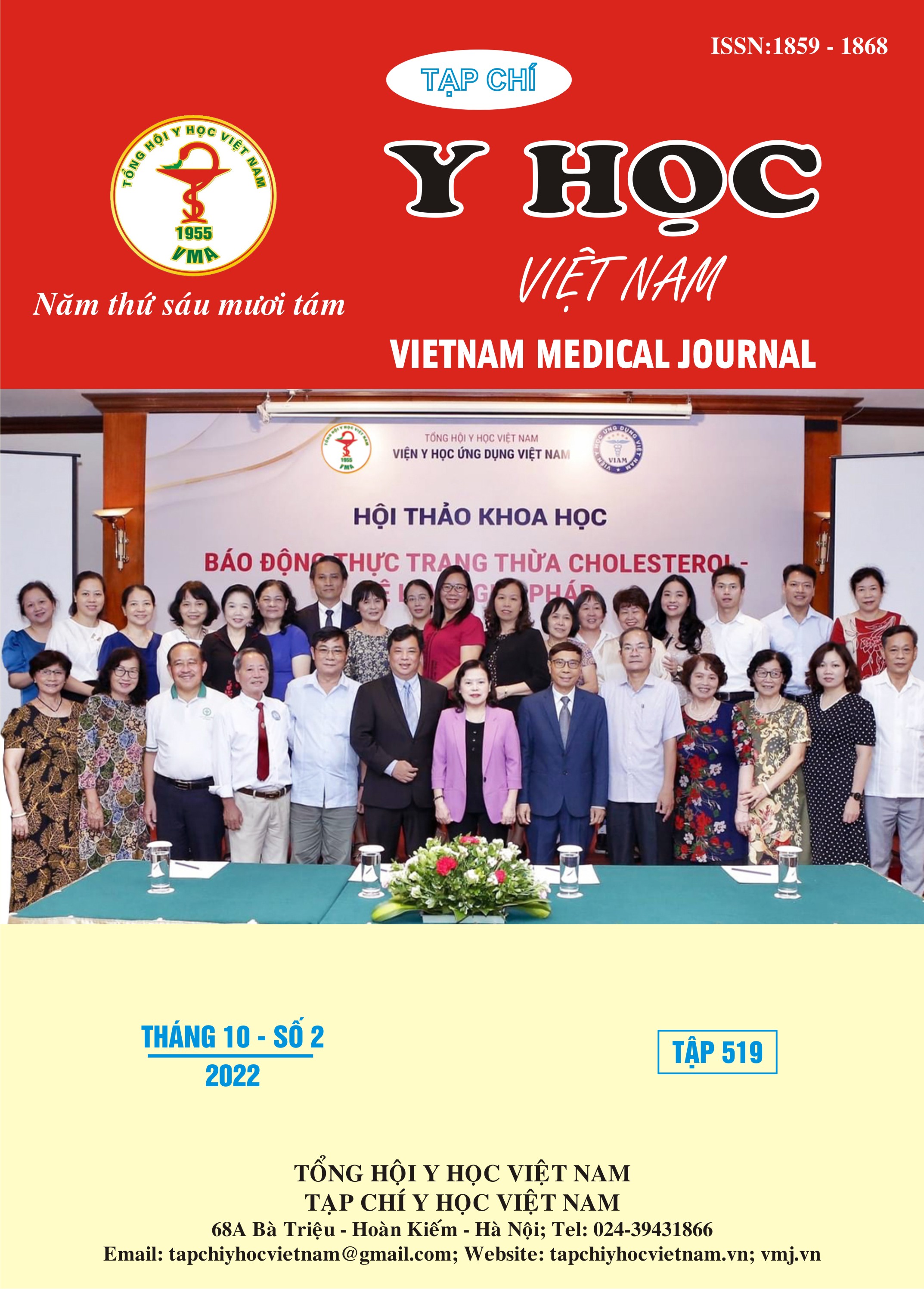PRELIMINARY RESULTS OF AI-ASSISSTED COLONOSCOPY APPLICATION IN PROXIMAL COLON POLYP DETECTION
Main Article Content
Abstract
We conducted a prospective, single-blind, randomized controlled trial to compare the adenoma/polyp missing rate (AMR, PMR) and adenoma/polyp detection rate (ADR, PDR) at the proximal colon of AI-assissted colonoscopy with conventional colonoscopy. During colonoscopy, the endoscopist withdrew the endoscope to obseve the proximal colon 2 times, minimum 4 minutes each times, using white light. The first withrawal was with or without AI assistance based on randomization; the second withdrawal was without AI assitance. All detected polyps characteristics were reported including size, location of detection, polyp morphology according to Paris classification, and histopathological results. PMR, AMR, PDR, ADR of the proximal colon in the conventional group were 14.6%, 14.6%, 58.0%, 48.4%, respectively; in the AI-assisted group were 16.1%, 13.0%, 72.4%, 58.6%, respectively; there was no significant differences. AI-assisted colonoscopy showed similar polyp/adenoma missing and detection rates at the proximal colon with conventional colonoscopy. AI assistance can be used as co-assessment with endoscopists during colonoscopy.
Article Details
Keywords
Artificial intelligence, colonoscopy, polyp, adenoma detection rate
References
2. Saftoiu, A., et al., Role of gastrointestinal endoscopy in the screening of digestive tract cancers in Europe: European Society of Gastrointestinal Endoscopy (ESGE) Position Statement. Endoscopy, 2020. 52(4): p. 293-304.
3. Zhao, S., et al., Magnitude, Risk Factors, and Factors Associated With Adenoma Miss Rate of Tandem Colonoscopy: A Systematic Review and Meta-analysis. Gastroenterology, 2019. 156(6): p. 1661-1674.e11.
4. Shergill, A.K., et al., Protective association of colonoscopy against proximal and distal colon cancer and patterns in interval cancer. Gastrointest Endosc, 2015. 82(3): p. 529-37 e1.
5. Bray, F., et al., Global cancer statistics 2018: GLOBOCAN estimates of incidence and mortality worldwide for 36 cancers in 185 countries. CA Cancer J Clin, 2018. 68(6): p. 394-424.
6. Leung, W.K., et al., Detection of colorectal adenoma by narrow band imaging (HQ190) vs. high-definition white light colonoscopy: a randomized controlled trial. Am J Gastroenterol, 2014. 109(6): p. 855-63.
7. Ikematsu, H., et al., The impact of narrow band imaging for colon polyp detection: a multicenter randomized controlled trial by tandem colonoscopy. J Gastroenterol, 2012. 47(10): p. 1099-107.
8. Lui, T., K. Wong, and W. Leung, Artifical Intelligence Image Classifier Based on Nonoptical Magnified Images Accurately Predicts Histology and Endoscopic Resectability of Different Colonic Lesions, in Digestive Disease Week (DDW) 2019. 2019: San Diego, CA.
9. Nagtegaal, I.D., et al., The 2019 WHO classification of tumours of the digestive system. Histopathology, 2020. 76(2): p. 182-188.


